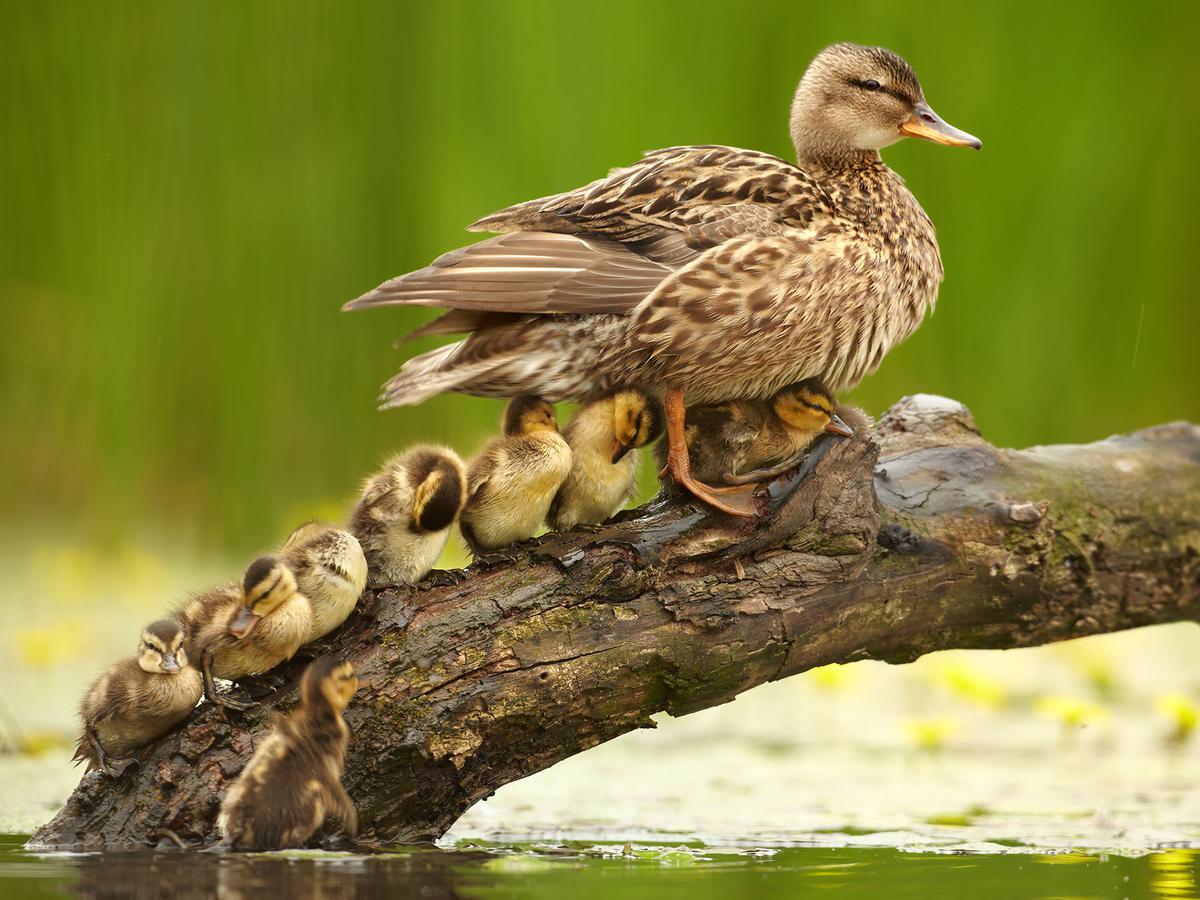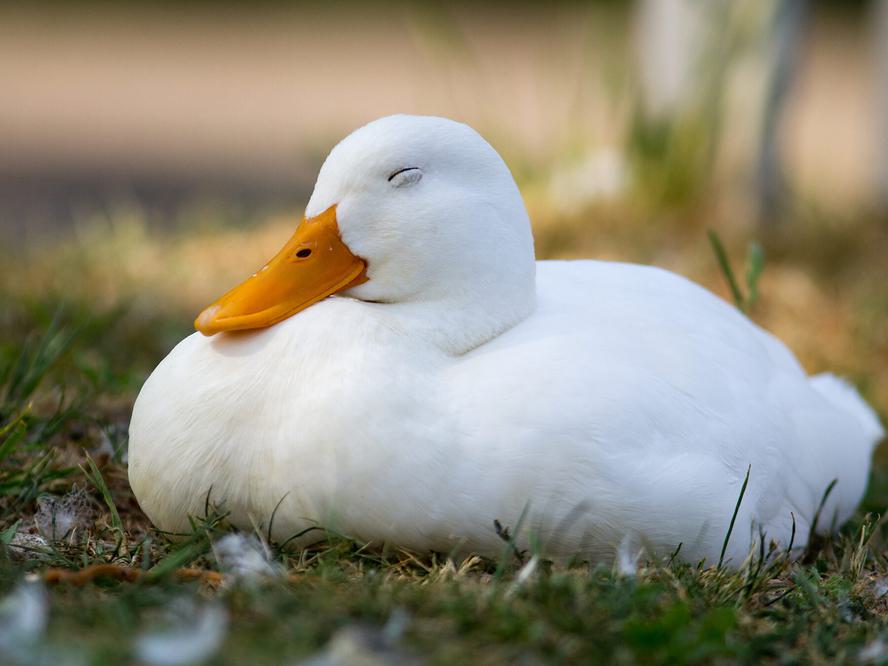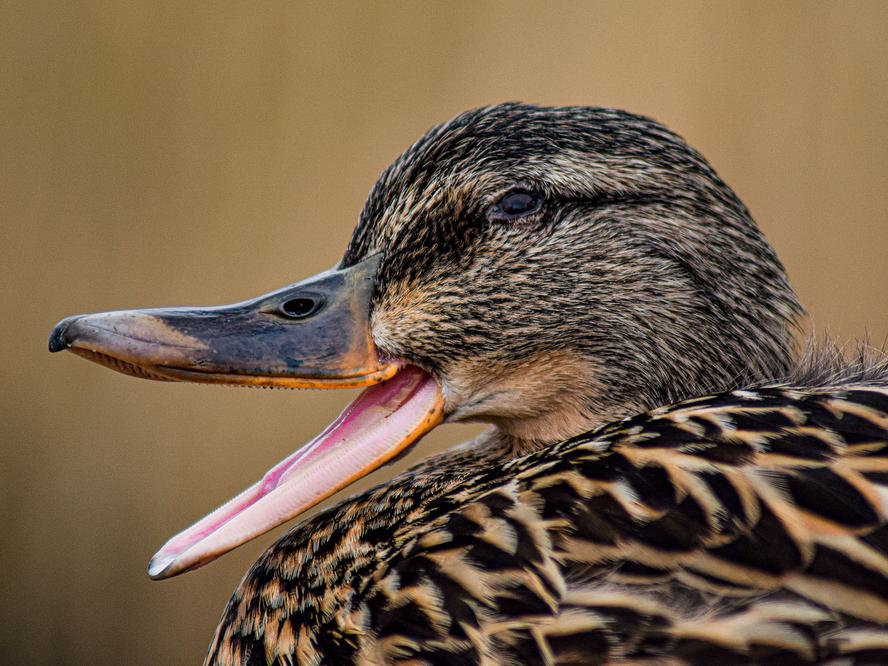Jump to Section
From Quack to Courtship: Understanding How Ducks Mate
Last updated: 16 November 2023

From impressing a partner to mating and raising a family, duck reproduction is a fascinating process filled with rituals, danger, and sometimes even violence. Each species does things a little differently, and with over a hundred duck species in the world and more than 30 species in the United States alone, there’s a lot we can learn about these waterbirds!
In this guide, we’ll be learning all about duck mating. Whether you’re an avid birdwatcher or you keep your own domestic ducks, read along to discover some fascinating facts about wildfowl reproduction.
Seasonality of Mating
Ducks do not mate throughout the year. Instead, they rely on the favorable weather and abundant food resources of spring and summer to ensure enough food for the incubating mother and give the ducklings the best start in life.
To get their timing just right, many ducks form pairs well in advance of the nesting season, so winter is often the best time to see some of their fascinating courtship rituals. However, some species will leave it a little longer and form pairs after arriving at their breeding grounds.
Migration is a big part of the deal for many species, so timing their arrival at the nesting grounds is important too. If they start too early, they risk starvation or late storms that can cause nest failure, and if they start too late their nesting grounds may dry up.
Different species begin nesting at different times, depending on their breeding behaviors and geographical location (altitude and latitude). However, most start between mid-April and mid-June. Their timing may vary somewhat between the years, too, and they may begin and end nesting earlier in warm years.

A pair of Harlequin Ducks. Many ducks form pairs well in advance of the nesting season
Courtship and Mating Rituals
Ducks perform various courtship displays, depending on their species. Distinct displays have evolved to minimize interbreeding in areas where different species live together, although hybridization still happens. The drake (male duck) performs these displays to attract and impress a female, although she has her own signals to encourage or reject potential mates. Each female may have many suitors, all trying to get her attention out on the water.
In many species, the male is the more colorful sex, often with bright, glossy plumage and sometimes even showy crests and elongated tails. Apart from their fancy feathers, males put on interesting courtship displays, including various vocalizations and ritualized movements like throwing their heads back, extending their necks, or splashing the water with their feet.
Let’s take a brief look at some of the displays performed by well-known duck species:
Mallards - Anas platyrhynchos
Mallards perform highly ritualized courtship behaviors. These include brief displays of shaking their heads and tails, bobbing their heads up and down, and lifting their heads and tails high up out of the water while broadside to the female. Drakes also whistle and spurt water toward females after dipping their bills briefly under the surface. You could spot Mallards displaying anytime from the fall to the spring.
Pintail - Anas acuta
The Pintail is an excellent example of a duck with distinctive breeding plumage. In the winter, drakes develop elegant markings, brighter bills, and long tail feathers to attract a female. However, Pintail drakes don’t only rely on looks. They also perform courtship displays such as ‘grunt-whistling’ and lifting the head and tail.

Mallards perform highly ritualized courtship behaviors which include brief displays of shaking their heads and tails

The Northern Pintail is an excellent example of a duck with distinctive breeding plumage
Ruddy Duck - Oxyura jamaicensis
The male Ruddy Duck becomes especially attractive in the breeding season, with rufous plumage, a bold black and white head, and a bright blue bill. He puts on a curious display to attract females to his territory. These birds lift their tails and beat their own breast with their bills, creating a patch of bubbles, and then conclude with a drawn-out croaking call.
Goldeneye - Bucephala clangula
The Goldeneye drake puts on quite a show during the winter, with over a dozen different displays performed out on the water. One of the most dramatic (and entertaining) involves tilting his head all the way back, uttering a squeaky call, and splashing the water with his webbed feet.

The male Ruddy Duck becomes especially attractive in the breeding season

The Goldeneye drake puts on quite a show during the winter, with over a dozen different displays performed on the water
Mate Selection
There are usually more male ducks around than females, and there’s no shortage of potential mates. So, how do females choose a partner?
Female ducks can only produce so many offspring in their lifespan, so selecting the best possible father for their young is very important. While the drake may not be of much help in raising her young, strong genetics increase the likelihood of the ducklings’ survival and, therefore, the odds of preserving the mother’s own bloodline.
She will select not only the best-looking male (best crest, colors, longest tail, etc.) but also the most dominant and most accomplished performer. His looks and displays highlight his strength, partly by virtue of the fact that he can afford to devote so much energy outside of feeding and self-preservation.
Pair Bond
Most species are monogamous in the breeding season and form bonds that last until the female has laid her eggs. On the nesting grounds, the drake is most concerned with keeping other males away, although the hen probably benefits from being left in peace. Unlike swans and geese, most ducks find a new partner each year. However, some species, like Buffleheads, may form longer bonds and reunite in successive years.
Although rare, some male ducks may have several partners in a single season if their territory attracts more than one female. This mating strategy is known as polygamy and occurs in Ruddy Ducks and Muscovy Ducks.

A Muscovy Duck. Some duck species may have several partners in a single season
The Mating Process
Ducks and other waterfowl are unusual among birds in that the males have a phallus (penis). In the breeding season, the drake’s testes enlarge in preparation for mating, and he regrows his phallus. That’s right, ducks grow a new penis each year. These screw-shaped organs are used for internal fertilization rather than the ‘cloacal kiss’ that most birds rely on. The female reproductive organs are also corkscrew-shaped, and they have blind-ending side chambers.
Ducks can mate either on land or in the water. The male mounts the female and holds her head in his bill. She will lift or move her tail to one side to facilitate mating, and the process may take a few seconds to get into position. Once everything is lined up, the act of copulation takes just a fraction of a second for the male to transfer his sperm.
Nature can be cruel - in our eyes, anyway - and rape is a common occurrence in some duck species. Females can avoid being fertilized by unwanted males by directing sperm into their dead-end chambers and expelling it. In an evolutionary blunder, some females do not survive mating due to drowning. If too many males force copulation, she may not survive having her head pushed under the water repeatedly.

A Mallard. Ducks and other waterfowl are unusual among birds in that the males have a phallus
Nesting Habits
The female duck is responsible for selecting a suitable area and building the nest. She will return to the same place where she was hatched, a behavior known as natal philopatry. Males are not particular about their nesting grounds and are content to follow their partner back to her preferred site.
Most ducks nest on the ground in a down-lined depression, although some build their nests in thick emergent vegetation, and species like the Wood Duck nest in tree cavities. Continue reading to learn more about duck nests.
Ground nests
Ground nesting ducks may nest in thick grass or select densely wooded areas to lay their eggs. The female typically creates a shallow depression and lines it with vegetation from the immediate area and down feathers from her own body.
Cavity nests
Cavity nesting species like Mandarin Ducks prefer the shelter and safety of holes in trees well above the ground. They will use natural cavities or the old nest chambers of large Woodpeckers.
Floating nests
Some species, like the Ring-neck, prefer to keep to the safety of the water. These ducks build their nests above the water by folding emergent vegetation like reeds and collecting other nearby plant material.

A Female Eider Duck - Ground nesting ducks may nest in thick grass or select densely wooded areas

Wood Duck Ducklings - Cavity nesting species prefer the shelter and safety of holes in trees well above the ground
Fertilization and Egg-Laying
Ducks, like all birds, reproduce by internal fertilization, and after copulation, the female can store the male’s sperm for several weeks. Her eggs are produced in the ovary and then fertilized in the oviduct. A calcium shell is laid down before each egg is released to develop outside of the body. Within this protective shell, duck eggs contain all the materials required for the duckling to develop.
Most ducks produce a single brood each year. Their clutch size varies from as little as two eggs in some Eider species to 13 or more in the Mallard. They lay an egg each day, and once laid, all they need is a warm body to keep their temperature stable night and day.
During incubation, the growing embryo develops a spinal column, blood cells, and vessels to distribute them to the shell, where carbon dioxide is released and oxygen is absorbed. After three to four weeks, the duckling is ready to break free using its hardened egg tooth.

Nest of a Tufted Duck - Most ducks produce a single brood each year
Parental Care and Rearing of Offspring
Incubation
Once the female has laid her eggs or completed incubation, the male will usually abandon her and, if possible, find another mate for the chance of a second mating. However, the males of a few species, like the Crested Duck of Patagonia, remain nearby to protect their young.
In most species, the female duck is left to incubate the eggs alone, and this takes about four weeks on average. During this time, she will roll and move the eggs within the nest to ensure that each is being incubated equally.
Without any help from the male, female ducks are forced to leave their eggs periodically to drink and feed themselves. However, they will cover their eggs in down feathers to keep them insulated and hidden until they return. When the time comes, it takes the eggs many hours (up to two days) to hatch, and all the chicks usually break free within a day or two of each other.
Parental Care
The downy ducklings are precocial, which means they are able to walk around and swim on their first day, although they often leave the nest together a day after each duckling has hatched.
The ducklings imprint on their mother’s voice before hatching and on her form soon after leaving the egg. This step is vital because they must follow her from the nest to the water, which may require a perilous journey or even a leap from high above the ground. While they may be highly mobile, the fluffy ducklings are not yet able to maintain a stable body temperature, so they will huddle up to their mom for warmth, shade, or shelter.
The ducklings feed themselves, although they rely on their mother to lead them to areas with plenty of invertebrates and other food sources. The family will stay together for several weeks in most species, but their mother will leave before they are old enough to fly.

Female Gadwall Duck with her ducklings - The ducklings imprint on their mother’s voice before hatching and on her form soon after leaving the egg
Challenges and Threats During Mating Season
Finding a suitable nest site can be challenging, especially for cavity-nesting ducks that cannot create their own. Even ground-nesting species are faced with the challenge of finding a safe location with suitable cover and minimal predators and disturbances.
Even with a suitable nest site, the nesting period is full of danger for a female duck, her eggs, and her ducklings. They are vulnerable to many predators during this time, including the following species:
- Skunks
- Raccoons
- Weasels
- Coyotes
- Great-horned Owls
- Crows, Ravens, & Jays
- Gulls
Humans also pose a great risk to nesting wildfowl, especially in farming areas where ducks nest in croplands. Their eggs can be destroyed by heavy machinery or trampled by grazing livestock. Roads and other infrastructure can also pose a risk to ducklings as they journey to the water after hatching.
Conservation Efforts
While some species, such as the Mallard, remain widespread and abundant, many wildfowl are threatened by habitat destruction and overharvesting, and some are already extinct.
Ducks face a double-whammy in that their natural habitats are easily damaged by pollution and unsustainable land use practices, and the birds themselves are a valuable food and sport resource for hunters.
Conservation and careful management are vital for the continued health of wildfowl populations. Fortunately, the work done by various government departments, charities like the Wildfowl and Wetlands Trust in the UK, and non-profit organizations like Ducks Unlimited in North America, is safeguarding the future of ducks and their natural habitats.

The Madagascar Pochard is a critically endangered species
Summary
From choreographed courtships to unusual anatomy, duck mating biology and habits are fascinating to observe and study! These birds have developed complex social, biological, and behavioral processes to reproduce successfully in dynamic environments filled with competition and danger.
With so many threats, ducks are understandably secretive when it comes to nesting. However, birdwatchers can still enjoy fantastic sightings of duck courtship and breeding behaviors, even at local ponds not far from home. Why not grab your binoculars and head out to a local reserve or waterway to watch the ducks pairing up this winter?
FAQs
What role do plumages play in duck mating?
The males of many Duck species develop colorful plumage each winter to show off their fitness for potential females. While fancy feathers might help the drakes attract a partner, they aren’t great for blending in, so females tend to be drab and well-camouflaged to avoid attracting nest predators.
How do ducks communicate during the mating season?
Ducks communicate visually and vocally in the mating season. Both males and females use calls, postures, and movements to communicate. Drakes with bright plumage also communicate their health and fitness just by their appearance.
Are there any specific behaviors exhibited by ducks during mating?
Ducks display many unique behaviors during the mating season. Calls and courtship displays are often very species-specific to reduce the chance of birds pairing up with ducks of a different species.
What can we learn from studying the mating habits of ducks?
Studying the mating behaviors of ducks isn’t just a fascinating pastime. It also teaches us about the evolutionary history of wildfowl and, importantly, helps decision-makers develop conservation and management strategies to protect threatened species and maintain healthy game bird populations.









